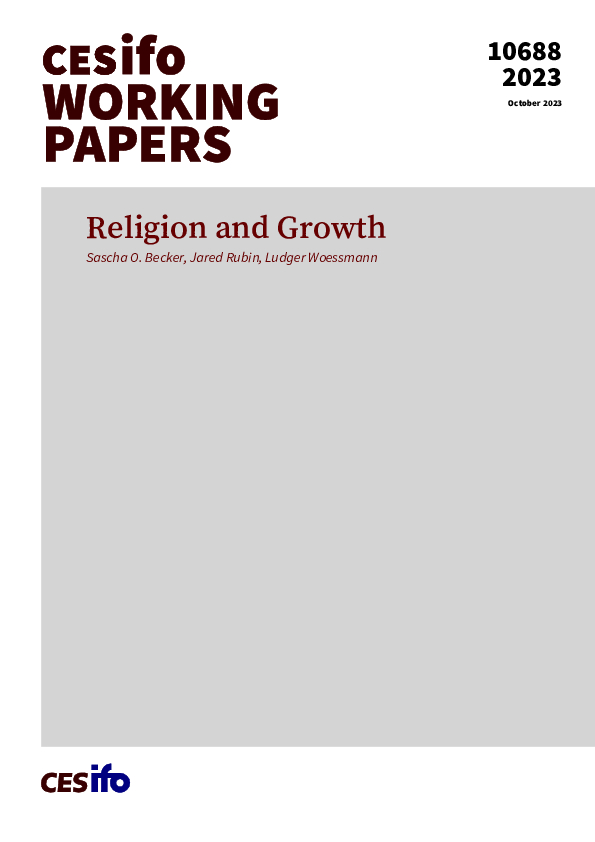Religion and Growth
CESifo, Munich, 2023
CESifo Working Paper No. 10688

We use the elements of a macroeconomic production function—physical capital, human capital, labor, and technology—together with standard growth models to frame the role of religion in economic growth. Unifying a growing literature, we argue that religion can enhance or impinge upon economic growth through all four elements because it shapes individual preferences, societal norms, and institutions. Religion affects physical capital accumulation by influencing thrift and financial development. It affects human capital through both religious and secular education. It affects population and labor by influencing work effort, fertility, and the demographic transition. And it affects total factor productivity by constraining or unleashing technological change and through rituals, legal institutions, political economy, and conflict. Synthesizing a disjoint literature in this way opens many interesting directions for future research.
Economics of Education
Fiscal Policy, Macroeconomics and Growth